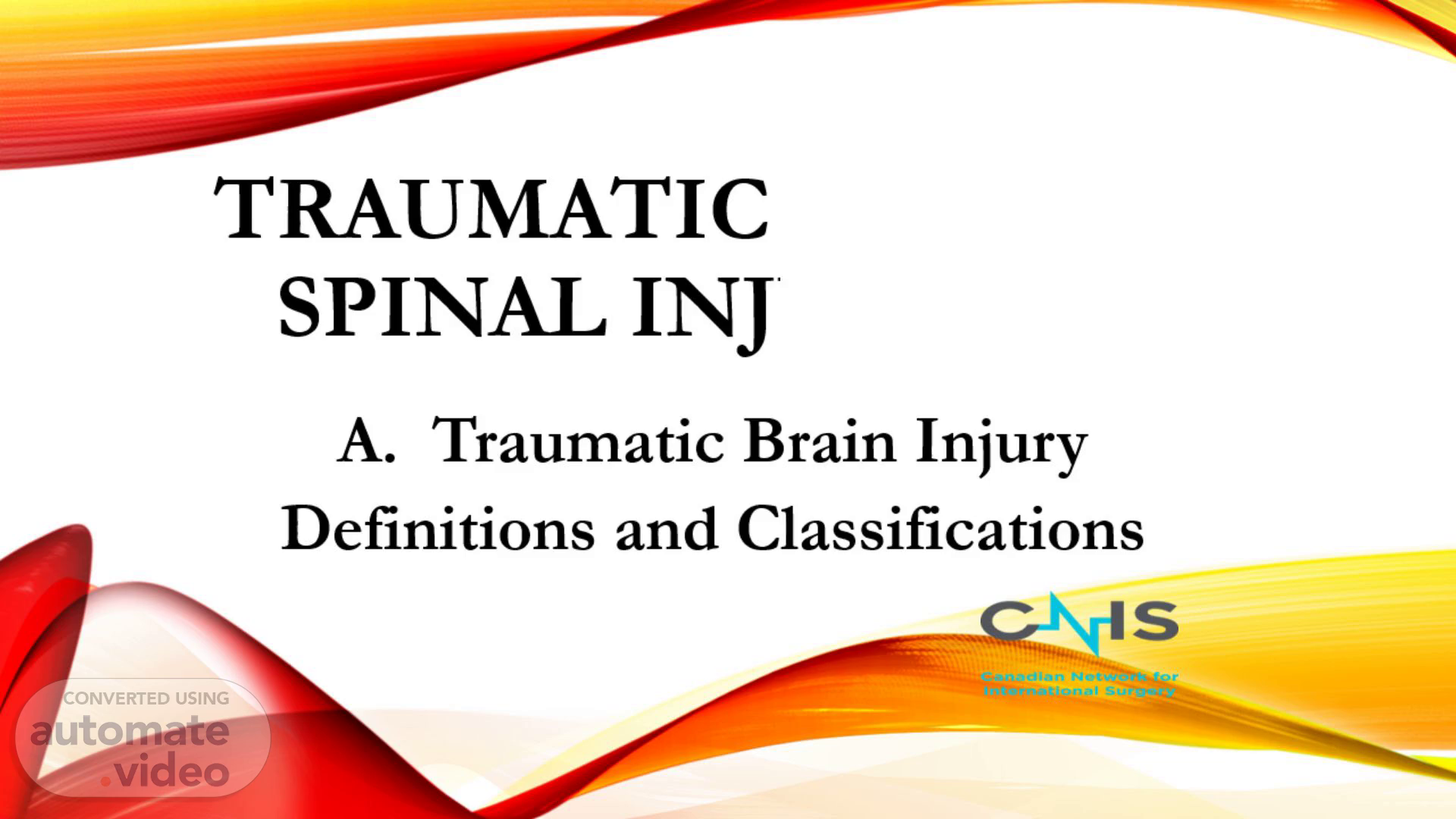
Page 1 (0s)
Traumatic Brain and Spinal Injury (TBSI). A. Traumatic Brain Injury Definitions and Classifications.
Page 2 (9s)
II. Traumatic Brain Injury (TBI). HI (Head Injury): An injury that occurs as a result of trauma to the head often accompanied by varying degrees of damage the brain potential for an altered level of consciousness TBI (Traumatic Brain Injury): A specific subset of head injuries that primarily focuses on trauma to the brain occurs when external forces cause damage to the brain may lead to cognitive, physical, and emotional impairments..
Page 3 (30s)
TBI Classifications. 1. Injury Type 2.Mechanism of injury 3.Severity 4.Primary or Secondary.
Page 4 (40s)
1. Open or Closed Head Injuries:. Open Head Injury: Involves a break in the skull and exposure of the brain to the external environment. Closed Head Injury: The skull remains intact; there is no breach in the protective barrier.
Page 5 (55s)
2. Injury Type : Structural injuries. Skull Fractures: Involves the breaking or cracking of the skull bone. Skull fractures are categorized as: Linear Skull Fracture Depressed Skull Fracture Basal Skull Fracture Intracranial hematomas: occur within the cranial cavity and are categorized as: Accumulations of blood in the intracranial space. Subdural Hematoma Diffuse Axonal Injury (DAI): widespread damage to nerve fibres in the brain. Rotational forces cause shearing and tearing of axons throughout the brain. Open (Compound) Skull Fracture Intracerebral Hemorrhages Contusions Epidural Hematoma Intraventricular hemorrhages Subarachnoid hemorrhages.
Page 6 (1m 21s)
3. Duration-Based Classification: Acute or Chronic Injury.
Page 7 (1m 36s)
2. Mechanism-Based Classification:. Blunt Head Injury: Occurs when an external force strikes the head without penetration Penetrating Head Injury: Involves an object or projectile penetrating the skull and entering the brain.
Page 8 (1m 50s)
Severity Based Classification (According to the Glasgow Coma Scale (GCS).
Page 9 (2m 10s)
5. Primary or Secondary Injury:. Primary traumatic brain injury: immediate damage that occurs at the time of impact. Secondary traumatic brain injury: a result of subsequent processes that develop after the initial injury swelling, increased intracranial pressure, and inflammation. Managing secondary injury is critical to prevent further damage..
Page 10 (2m 28s)
Primary vs Secondary .. Primary Scalp injuries Skull fractures Contusions/lacerations Intracranial hematoma Diffuse axonal injury Diffuse vascular injury Cranial nerve injuries.
Page 11 (2m 43s)
TBI Classifications. 1. Open or Closed 2. Morphology-Based 3. Duration-Based 4 Mechanism-Based 5. Severity Based 6. Primary or Secondary.